Exploring the Antimicrobial Activity of Sodium Titanate Nanotube Biomaterials in Combating Bone Infections: An In Vitro and In Vivo Study
Abstract
1. Introduction
2. Materials and Methods
2.1. Materials
2.2. Synthesis of Sodium Titanate Nanotubes
2.3. Anti-Microbial Measurements
2.3.1. Fungal Isolates and Bacterial Inoculum Preparations
2.3.2. Minimal Bactericidal Concentration (MBC)
2.3.3. Minimum Inhibitory Concentration for Fungal Isolates (MIC-f)
2.4. Sorbitol Assay-Effect of NaTNT on the Cell Wall of Different Tested Fungal Strains
2.4.1. Minimum Fungicidal Concentration Assay (MFC)
2.4.2. Disc Diffusion Assay
2.4.3. Agar Diffusion Method for Fungal Isolates
2.4.4. Antifungal Assay
2.5. In Vivo Study with Wound Healing, Antimicrobial Evaluation, and Histopathological Investigations
2.6. Statistical Analysis
3. Results and Discussion
3.1. Nano Material Characterization
3.2. Antimicrobial Investigations
Anti-Bacterial Assay
4. Future Study
Author Contributions
Funding
Institutional Review Board Statement
Data Availability Statement
Acknowledgments
Conflicts of Interest
References
- Calhoun, J.H.; Manring, M.; Shirtliff, M. Osteomyelitis of the long bones. In Seminars in Plastic Surgery; Thieme Medical Publishers: New York, NY, USA, 2009; Volume 23, pp. 59–72. [Google Scholar]
- Sax, H.; Lew, D. Osteomyelitis. Curr. Infect. Dis. Rep. 1999, 1, 261–266. [Google Scholar] [CrossRef] [PubMed]
- Waldvogel, F.; Vasey, H. Osteomyelitis: The past decade. N. Engl. J. Med. 1980, 303, 360–370. [Google Scholar] [CrossRef] [PubMed]
- Goldenberg, D.L. Septic arthritis. Lancet 1998, 351, 197–202. [Google Scholar] [CrossRef] [PubMed]
- Homed, K.A.; Tam, J.Y.; Prober, C.G. Pharmacokinetic optimisation of the treatment of septic arthritis. Clin. Pharmacokinet. 1996, 31, 156–163. [Google Scholar] [CrossRef]
- Oliker, R.; Cunha, B.A. Streptococcus pneumoniae septic arthritis and osteomyelitis in an HIV-seropositive patient. Heart Lung 1999, 28, 74–76. [Google Scholar] [CrossRef]
- Darley, E.S.; MacGowan, A.P. Antibiotic treatment of gram-positive bone and joint infections. J. Antimicrob. Chemother. 2004, 53, 928–935. [Google Scholar] [CrossRef]
- Massarotti, E.; Dinerman, H. Septic arthritis due to Listeria monocytogenes: Report and review of the literature. J. Rheumatol. 1990, 17, 111–113. [Google Scholar]
- Raff, M.J.; Melo, J.C. Anaerobic osteomyelitis. Medicine 1978, 57, 83. [Google Scholar] [CrossRef]
- Goldstein, E.J. Bite wounds and infection. Clin. Infect. Dis. 1992, 14, 633–640. [Google Scholar] [CrossRef]
- Taj-Aldeen, S.J.; Gamaletsou, M.N.; Rammaert, B.; Sipsas, N.V.; Zeller, V.; Roilides, E.; Kontoyiannis, D.P.; Henry, M.; Petraitis, V.; Moriyama, B.; et al. Bone and joint infections caused by mucormycetes: A challenging osteoarticular mycosis of the twenty-first century. Med. Mycol. 2017, 55, 691–704. [Google Scholar] [CrossRef]
- Koehler, P.; Tacke, D.; Cornely, O.A. Aspergillosis of bones and joints–a review from 2002 until today. Mycoses 2014, 57, 323–335. [Google Scholar] [CrossRef] [PubMed]
- Horsburgh, C.R., Jr.; Cannady, P.B., Jr.; Kirkpatrick, C.H. Treatment of fungal infections in the bones and joints with ketoconazole. J. Infect. Dis. 1983, 147, 1064–1069. [Google Scholar] [CrossRef] [PubMed]
- Joshi, B.; Regmi, C.; Dhakal, D.; Gyawali, G.; Lee, S.W. Efficient inactivation of Staphylococcus aureus by silver and copper loaded photocatalytic titanate nanotubes. Prog. Nat. Sci. Mater. Int. 2018, 28, 15–23. [Google Scholar] [CrossRef]
- Franco, B.M.R.; Souza, A.P.O.; Molento, C.F.M. Welfare-friendly Products: Availability, labeling and opinion of retailers in Curitiba, Southern Brazil. Rev. Econ. Sociol. Rural 2018, 56, 9–18. [Google Scholar] [CrossRef]
- Xin, W.; Zhu, D.; Liu, G.; Hua, Y.; Zhou, W. Synthesis and characterization of Mn-C-codoped TiO2 nanoparticles and photocatalytic degradation of methyl orange dye under sunlight irradiation. Int. J. Photoenergy 2012, 2012, 767905. [Google Scholar] [CrossRef]
- Park, S.; Park, J.; Heo, J.; Lee, S.-E.; Shin, J.-W.; Chang, M.; Hong, J. Polysaccharide-based superhydrophilic coatings with antibacterial and anti-inflammatory agent-delivering capabilities for ophthalmic applications. J. Ind. Eng. Chem. 2018, 68, 229–237. [Google Scholar] [CrossRef]
- Ji, X.-W.; Liu, P.-T.; Tang, J.-C.; Wan, C.-J.; Yang, Y.; Zhao, Z.-L.; Zhao, D.-P. Different antibacterial mechanisms of titania nanotube arrays at various growth phases of E. coli. Trans. Nonferrous Met. Soc. China 2021, 31, 3821–3830. [Google Scholar] [CrossRef]
- Yoshinari, M.; Oda, Y.; Kato, T.; Okuda, K. Influence of surface modifications to titanium on antibacterial activity in vitro. Biomaterials 2001, 22, 2043–2048. [Google Scholar] [CrossRef]
- Liu, H.; Chen, Q.; Song, L.; Ye, R.; Lu, J.; Li, H. Ag-doped antibacterial porous materials with slow release of silver ions. J. Non-Cryst. Solids 2008, 354, 1314–1317. [Google Scholar] [CrossRef]
- Murakami, Y.; Matsumoto, T.; Takasu, Y. Salt Catalysts Containing Basic Anions and Acidic Cations for the Sol− Gel Process of Titanium Alkoxide: Controlling the Kinetics and Dimensionality of the Resultant Titanium Oxide. J. Phys. Chem. 1999, 103, 1836–1840. [Google Scholar] [CrossRef]
- Saleh, R.; Zaki, A.H.; El-Ela, F.I.A.; Farghali, A.A.; Taha, M.; Mahmoud, R. Consecutive removal of heavy metals and dyes by a fascinating method using titanate nanotubes. J. Environ. Chem. Eng. 2021, 9, 104726. [Google Scholar] [CrossRef]
- Hadacek, F.; Greger, H. Testing of antifungal natural products: Methodologies, comparability of results and assay choice. Phytochem. Anal. Int. J. Plant Chem. Biochem. Tech. 2000, 11, 137–147. [Google Scholar] [CrossRef]
- Morales, G.; Paredes, A.; Sierra, P.; Loyola, L.A. Antimicrobial activity of three Baccharis species used in the traditional medicine of Northern Chile. Molecules 2008, 13, 790–794. [Google Scholar] [CrossRef]
- Leite, M.C.A.; Bezerra, A.P.d.B.; Sousa, J.P.; Guerra, F.Q.S.; Lima, E.O. Evaluation of antifungal activity and mechanism of action of citral against Candida albicans. Evid.-Based Complement. Altern. Med. 2014, 2014, 378280. [Google Scholar] [CrossRef]
- Espinel-Ingroff, A.; Chaturvedi, V.; Fothergill, A.; Rinaldi, M. Optimal testing conditions for determining MICs and minimum fungicidal concentrations of new and established antifungal agents for uncommon molds: NCCLS collaborative study. J. Clin. Microbiol. 2002, 40, 3776–3781. [Google Scholar] [CrossRef] [PubMed]
- Alexander, B.D. Reference Method for Broth Dilution Antifungal Susceptibility Testing of Filamentous Fungi; Clinical and Laboratory Standards Institute: Wayne, PA, USA, 2017. [Google Scholar]
- De Souza, G.C.; Haas, A.; Von Poser, G.; Schapoval, E.; Elisabetsky, E. Ethnopharmacological studies of antimicrobial remedies in the south of Brazil. J. Ethnopharmacol. 2004, 90, 135–143. [Google Scholar] [CrossRef] [PubMed]
- Kalemba, D.; Kunicka, A. Antibacterial and antifungal properties of essential oils. Curr. Med. Chem. 2003, 10, 813–829. [Google Scholar] [CrossRef] [PubMed]
- Jeff-Agboola, Y.; Onifade, A.; Akinyele, B.; Osho, I. In vitro antifungal activities of essential oil from Nigerian medicinal plants against toxigenic Aspergillus flavus. J. Med. Plants Res. 2012, 6, 4048–4056. [Google Scholar] [CrossRef]
- Walker, H.L.; Mason, A.D., Jr. A standard animal burn. J. Trauma Acute Care Surg. 1968, 8, 1049–1051. [Google Scholar] [CrossRef]
- Sasidharan, S.; Nilawatyi, R.; Xavier, R.; Latha, L.Y.; Amala, R. Wound Healing Potential of Elaeis guineensis JacqLeaves in an Infected Albino Rat Model. Molecules 2010, 15, 3186–3199. [Google Scholar] [CrossRef]
- Snedecor, G.; Cochran, W. Statistical Methods, 7th ed.; The IOWA State Univ Press: Ames, IA, USA, 1982; Volume 507, pp. 53–57. [Google Scholar]
- Hua, S.; Yu, X.; Li, F.; Duan, J.; Ji, H.; Liu, W. Hydrogen titanate nanosheets with both adsorptive and photocatalytic properties used for organic dyes removal. Colloids Surf. Physicochem. Eng. Asp. 2017, 516, 211–218. [Google Scholar] [CrossRef]
- Wu, C.; Cai, Y.; Xu, L.; Xie, J.; Liu, Z.; Yang, S.; Wang, S. Macroscopic and spectral exploration on the removal performance of pristine and phytic acid-decorated titanate nanotubes towards Eu (III). J. Mol. Liq. 2018, 258, 66–73. [Google Scholar] [CrossRef]
- Subramaniam, M.; Goh, P.; Abdullah, N.; Lau, W.; Ng, B.; Ismail, A. Adsorption and photocatalytic degradation of methylene blue using high surface area titanate nanotubes (TNT) synthesized via hydrothermal method. J. Nanopart. Res. 2017, 19, 220. [Google Scholar] [CrossRef]
- Martínez-Klimov, M.E.; Hernández-Hipólito, P.; Martínez-García, M.; Klimova, T.E. Pd catalysts supported on hydrogen titanate nanotubes for Suzuki-Miyaura cross-coupling reactions. Catal. Today 2018, 305, 58–64. [Google Scholar] [CrossRef]
- Hernández-Hipólito, P.; Juárez-Flores, N.; Martínez-Klimova, E.; Gómez-Cortés, A.; Bokhimi, X.; Escobar-Alarcón, L.; Klimova, T.E. Novel heterogeneous basic catalysts for biodiesel production: Sodium titanate nanotubes doped with potassium. Catal. Today 2015, 250, 187–196. [Google Scholar] [CrossRef]
- Sheng, G.; Ye, L.; Li, Y.; Dong, H.; Li, H.; Gao, X.; Huang, Y. EXAFS study of the interfacial interaction of nickel (II) on titanate nanotubes: Role of contact time, pH and humic substances. Chem. Eng. J. 2014, 248, 71–78. [Google Scholar] [CrossRef]
- Aguilar-Méndez, M.A.; Martín-Martínez, S.; Ortega-Arroyo, L.; Cobián-Portillo, G.; Sánchez-Espíndola, E. Synthesis and characterization of silver nanoparticles: Effect on phytopathogen Colletotrichum gloesporioides. J. Nanopart. Res. 2011, 13, 2525–2532. [Google Scholar] [CrossRef]
- Petrikkos, G.; Skiada, A.; Lortholary, O.; Roilides, E.; Walsh, T.J.; Kontoyiannis, D.P. Epidemiology and clinical manifestations of mucormycosis. Clin. Infect. Dis. 2012, 54, S23–S34. [Google Scholar] [CrossRef] [PubMed]
- Binder, U.; Maurer, E.; Lass-Flörl, C. Mucormycosis–from the pathogens to the disease. Clin. Microbiol. Infect. 2014, 20, 60–66. [Google Scholar] [CrossRef]
- Kronen, R.; Liang, S.Y.; Bochicchio, G.; Bochicchio, K.; Powderly, W.G.; Spec, A. Invasive fungal infections secondary to traumatic injury. Int. J. Infect. Dis. 2017, 62, 102–111. [Google Scholar] [CrossRef]
- Arnáiz-García, M.; Alonso-Peña, D.; del Carmen González-Vela, M.; García-Palomo, J.; Sanz-Giménez-Rico, J.; Arnáiz-García, A. Cutaneous mucormycosis: Report of five cases and review of the literature. J. Plast. Reconstr. Aesthet. Surg. 2009, 62, e434–e441. [Google Scholar] [CrossRef]
- Kaur, H.; Ghosh, A.; Rudramurthy, S.M.; Chakrabarti, A. Gastrointestinal mucormycosis in apparently immunocompetent hosts—A review. Mycoses 2018, 61, 898–908. [Google Scholar] [CrossRef]
- Revisión Bibliográfica Narrativa: Mortalidad y Complicaciones de Mucormicosis en Zonas Rino-Orbital y Rinocerebral en Pacientes Inmunocomprometidos Con Leucemia. 2021. Available online: http://repositorio.puce.edu.ec:80/handle/22000/18876 (accessed on 1 February 2023).
- Frost, D.J.; Brandt, K.D.; Cugier, D.; Goldman, R. A whole-cell Candida albicans assay for the detection of inhibitors towards fungal cell wall synthesis and assembly. J. Antibiot. 1995, 48, 306–310. [Google Scholar] [CrossRef] [PubMed]
- Svetaz, L.; Agüero, M.B.; Alvarez, S.; Luna, L.; Feresin, G.; Derita, M.; Zacchino, S. Antifungal activity of Zuccagnia punctata Cav.: Evidence for the mechanism of action. Planta Med. 2007, 73, 1074–1080. [Google Scholar] [CrossRef] [PubMed]
- Reference Method for Broth Dilution Antifungal Susceptibility Testing of Yeasts, Approved Standard. CLSI Document M27-A2. 2002. Available online: https://cir.nii.ac.jp/crid/1570854176048718848 (accessed on 1 February 2023).
- Cortivo, R.; Vindigni, V.; Iacobellis, L.; Abatangelo, G.; Pinton, P.; Zavan, B. Nanoscale particle therapies for wounds and ulcers. Nanomedicine 2010, 5, 641–656. [Google Scholar] [CrossRef]
- Xu, R.; Luo, G.; Xia, H.; He, W.; Zhao, J.; Liu, B.; Tan, J.; Zhou, J.; Liu, D.; Wang, Y.; et al. Novel bilayer wound dressing composed of silicone rubber with particular micropores enhanced wound re-epithelialization and contraction. Biomaterials 2015, 40, 1–11. [Google Scholar] [CrossRef] [PubMed]
- Deepachitra, R.; Lakshmi, R.P.; Sivaranjani, K.; Chandra, J.H.; Sastry, T.P. Nanoparticles embedded biomaterials in wound treatment: A review. J. Chem. Pharm. Sci. 2015, 8, 324–329. [Google Scholar]
- Parham, S.; Wicaksono, D.H.; Bagherbaigi, S.; Lee, S.L.; Nur, H. Antimicrobial treatment of different metal oxide nanoparticles: A critical review. J. Chin. Chem. Soc. 2016, 63, 385–393. [Google Scholar] [CrossRef]
- Abbas, M.; Uçkay, I.; Lipsky, B.A. In diabetic foot infections antibiotics are to treat infection, not to heal wounds. Expert Opin. Pharmacother. 2015, 16, 821–832. [Google Scholar] [CrossRef] [PubMed]
- Robson, M.C. Wound infection: A failure of wound healing caused by an imbalance of bacteria. Surg. Clin. N. Am. 1997, 77, 637–650. [Google Scholar] [CrossRef] [PubMed]
- Singh, A.; Halder, S.; Chumber, S.; Misra, M.C.; Sharma, L.K.; Srivastava, A.; Menon, G.R. Meta-analysis of randomized controlled trials on hydrocolloid occlusive dressing versus conventional gauze dressing in the healing of chronic wounds. Asian J. Surg. 2004, 27, 326–332. [Google Scholar] [CrossRef] [PubMed]
- Madeira MD, P.; Gusmão, S.B.; de Lima, I.S.; Lemos, G.M.; Barreto, H.M.; Abi-chacra, É.D.A.; Osajima, J.A. Depositation of sodium titanate nanotubes: Superhydrophilic surface and antibacterial approach. J. Mater. Res. Technol. 2022, 19, 2104–2114. [Google Scholar] [CrossRef]
- Mohamed, H.; Zaki, A.; El-Ela, F.I.A.; El-dek, S. Effect of hydrothermal time and acid-washing on the antibacterial activity of Sodium titanate nanotubes. In IOP Conference Series: Materials Science and Engineering; IOP Publishing: Bristol, UK, 2021; Volume 1046, p. 012025. [Google Scholar]
- dos Reis, C.M.; da Rosa, B.V.; da Rosa, G.P.; Carmo, G.D.; Morandini, L.M.B.; Ugalde, G.A.; Kuhn, K.R.; Morel, A.F.; Jahn, S.L.; Kuhn, R.C. Antifungal and antibacterial activity of extracts produced from Diaporthe schini. J. Biotechnol. 2019, 294, 30–37. [Google Scholar] [CrossRef]
- Hafshejani, T.M.; Zamanian, A.; Venugopal, J.R.; Rezvani, Z.; Sefat, F.; Saeb, M.R.; Vahabi, H.; Zarintaj, P.; Mozafari, M. Antibacterial glass-ionomer cement restorative materials: A critical review on the current status of extended release formulations. J. Control. Release 2017, 262, 317–328. [Google Scholar] [CrossRef] [PubMed]
- Maikranz, E.; Spengler, C.; Thewes, N.; Thewes, A.; Nolle, F.; Jung, P.; Bischoff, M.; Santen, L.; Jacobs, K. Different binding mechanisms of Staphylococcus aureus to hydrophobic and hydrophilic surfaces. Nanoscale 2020, 12, 19267–19275. [Google Scholar] [CrossRef]
- Hwangbo, S.; Jeong, H.; Heo, J.; Lin, X.; Kim, Y.; Chang, M.; Hong, J. Antibacterial nanofilm coatings based on organosilicate and nanoparticles. React. Funct. Polym. 2016, 102, 27–32. [Google Scholar] [CrossRef]
- Yang, K.; Shi, J.; Wang, L.; Chen, Y.; Liang, C.; Yang, L.; Wang, L.-N. Bacterial anti-adhesion surface design: Surface patterning, roughness and wettability: A review. J. Mater. Sci. Technol. 2022, 99, 82–100. [Google Scholar] [CrossRef]
- Kundu, S.; Sain, S.; Choudhury, P.; Sarkar, S.; Das, P.K.; Pradhan, S.K. Microstructure characterization of biocompatible heterojunction hydrogen titanate-Ag2O nanocomposites for superior visible light photocatalysis and antibacterial activity. Mater. Sci. Eng. 2019, 99, 374–386. [Google Scholar] [CrossRef]

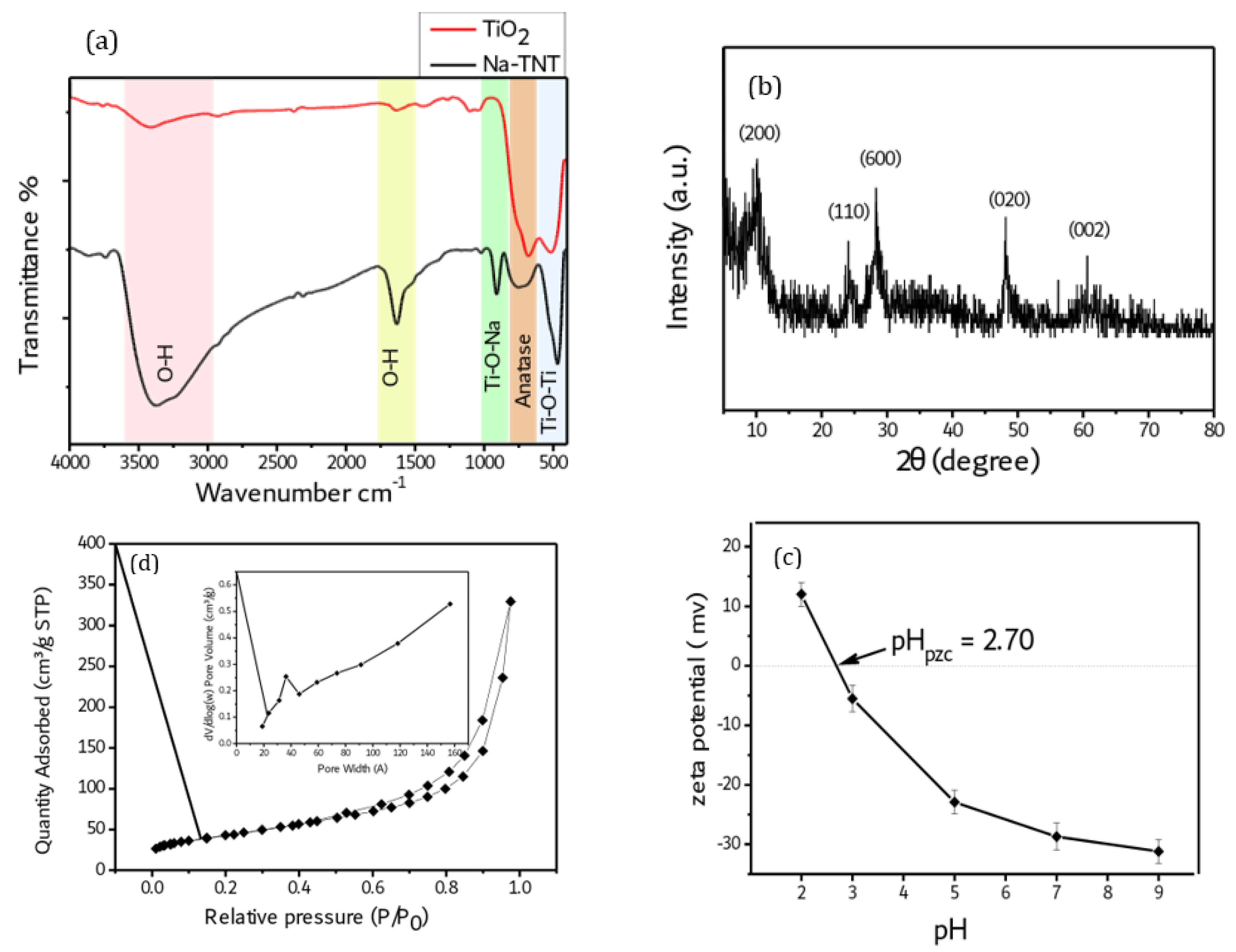
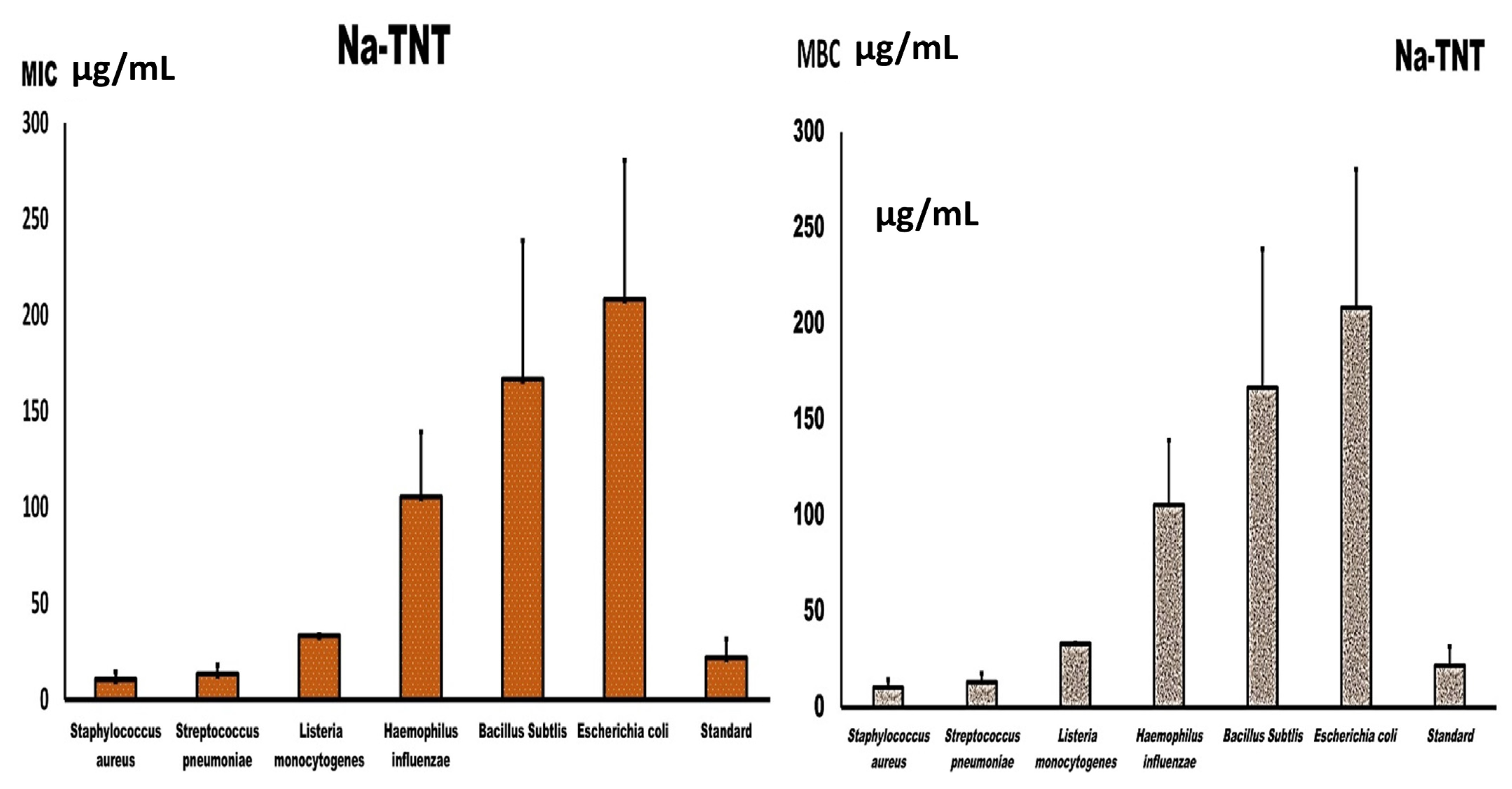
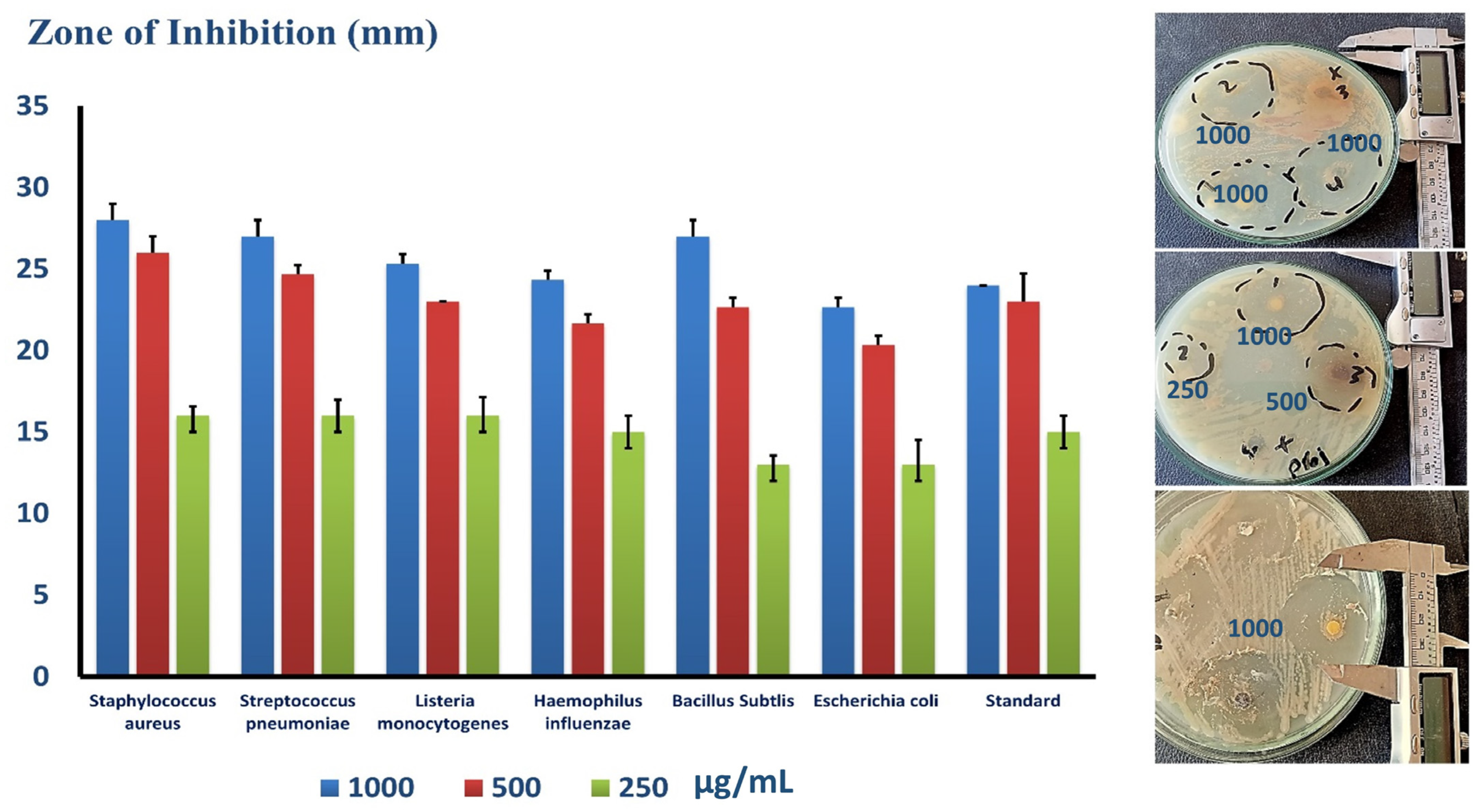
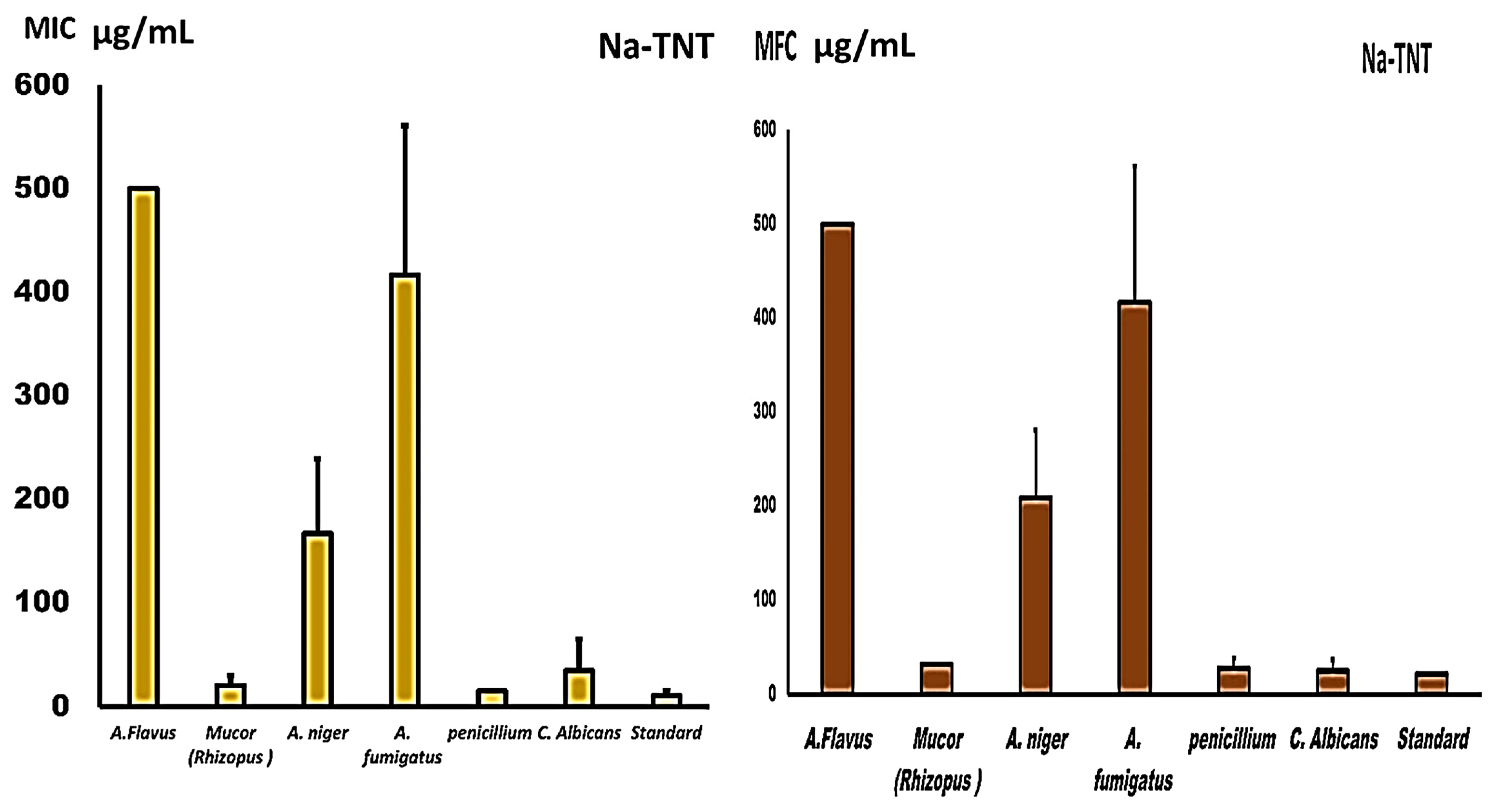
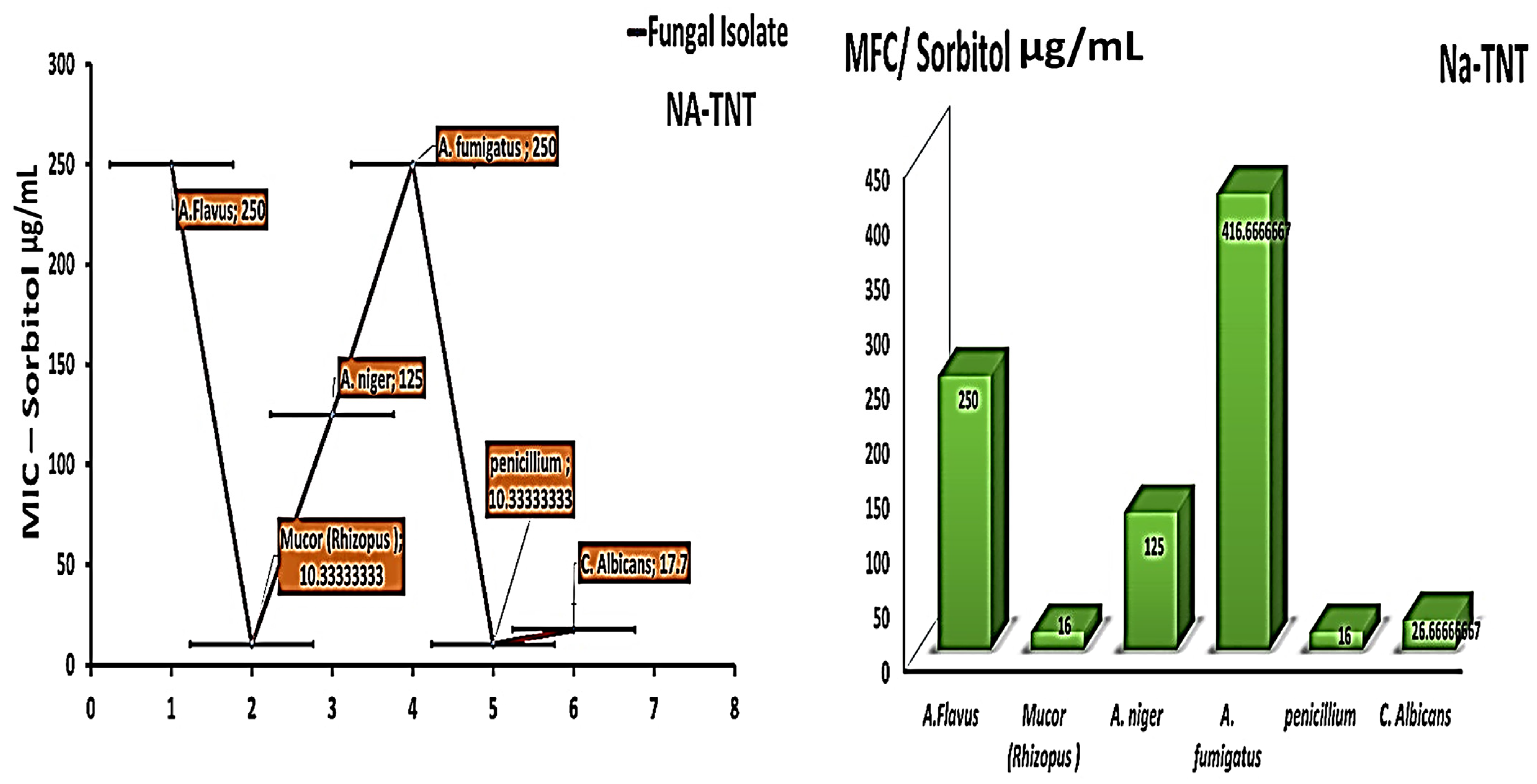
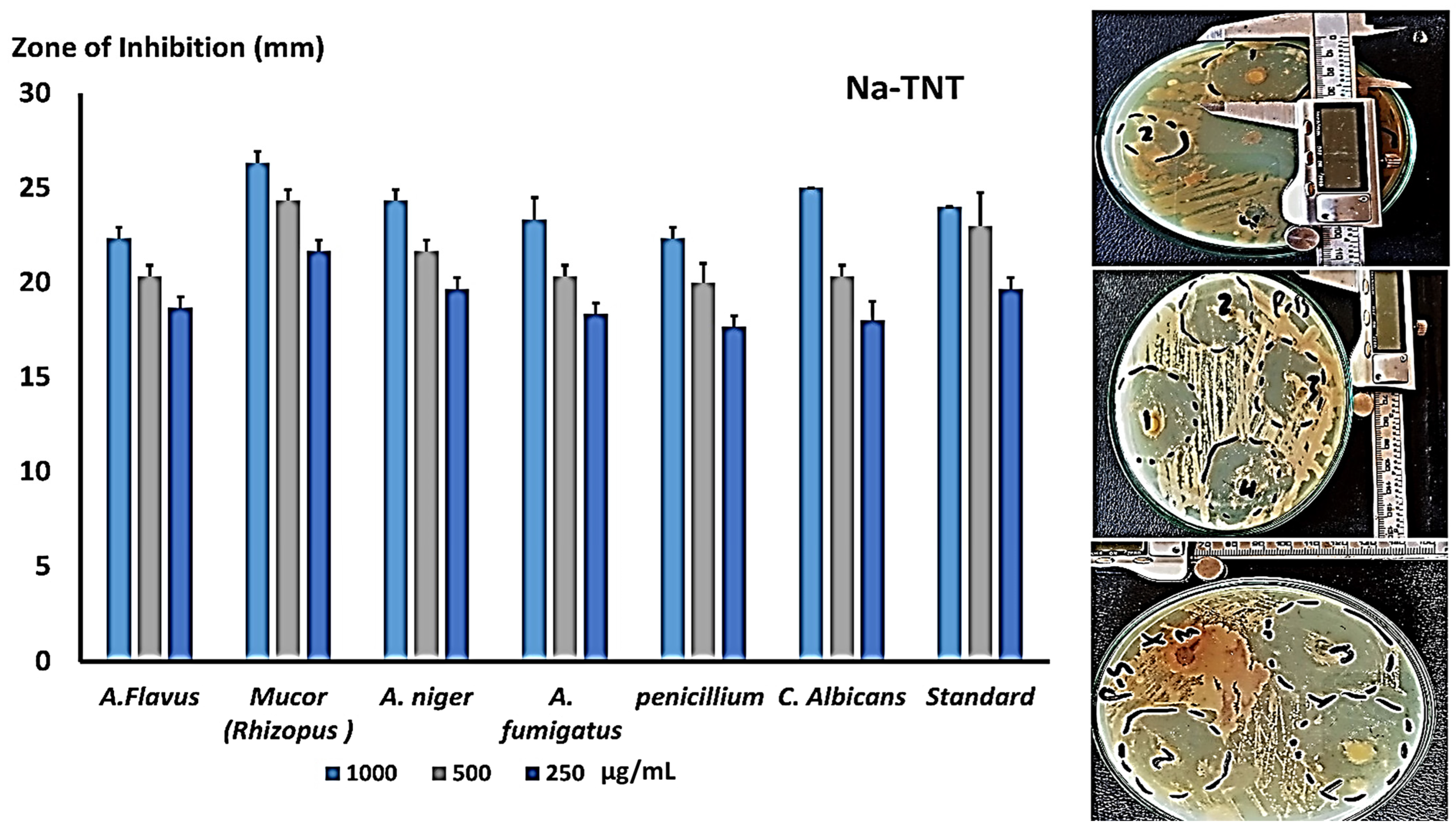

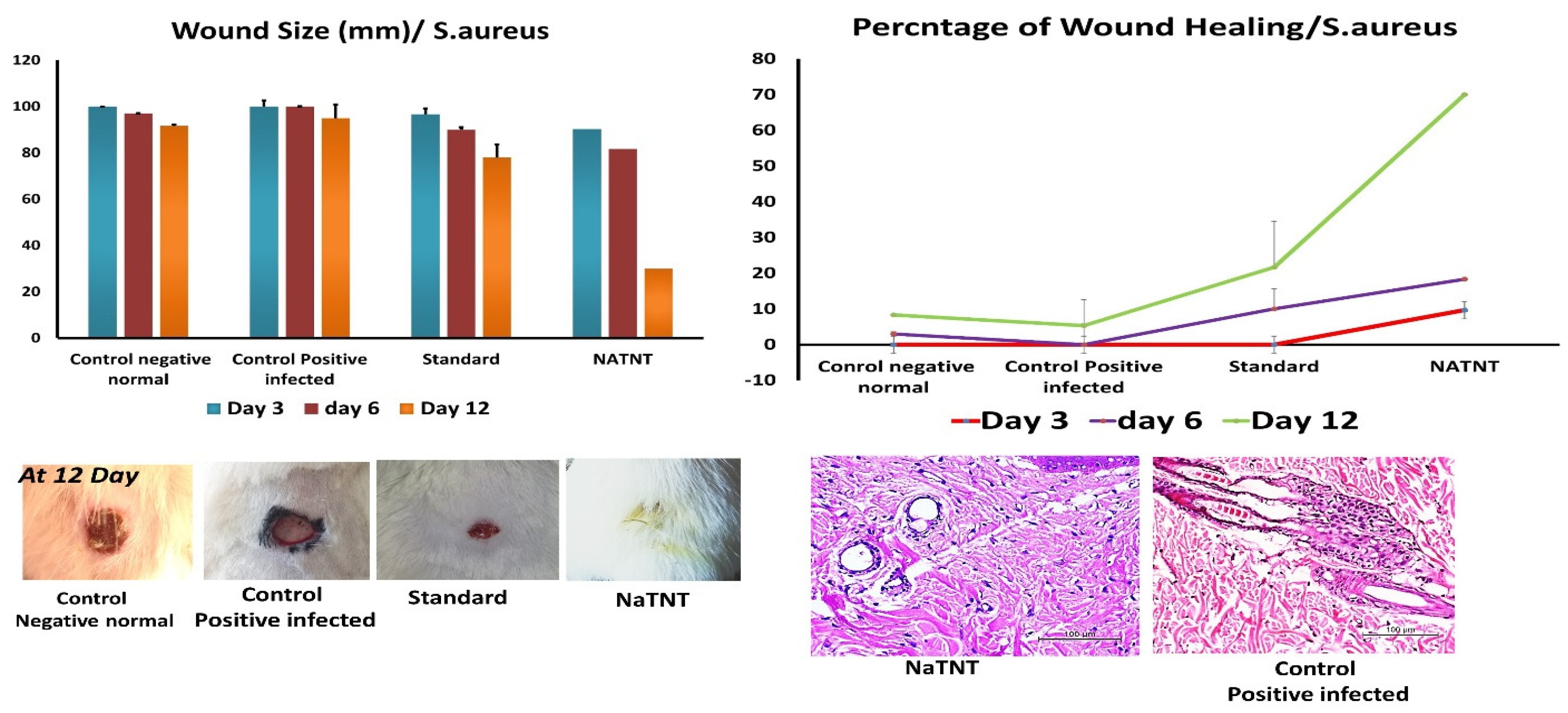
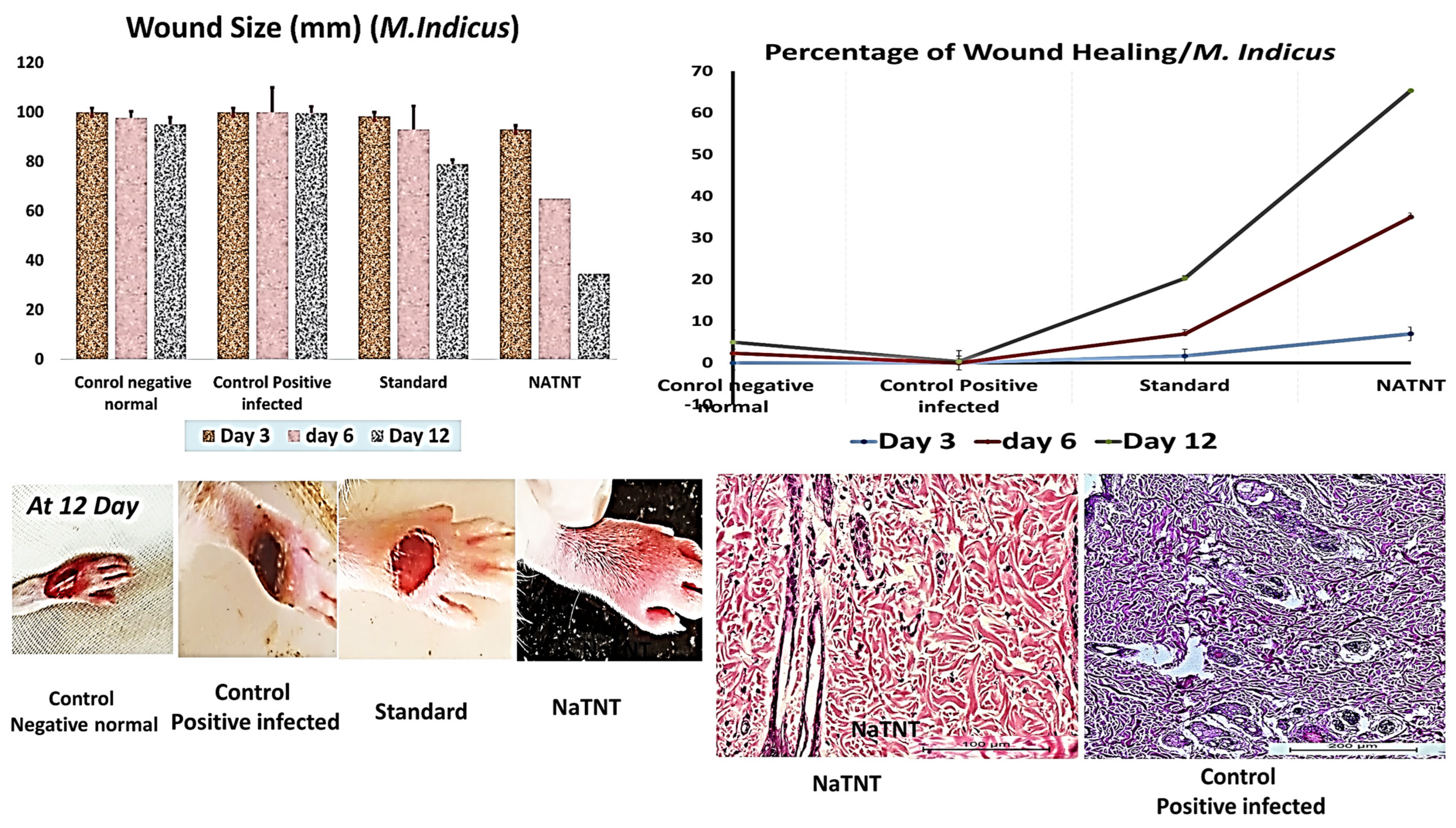
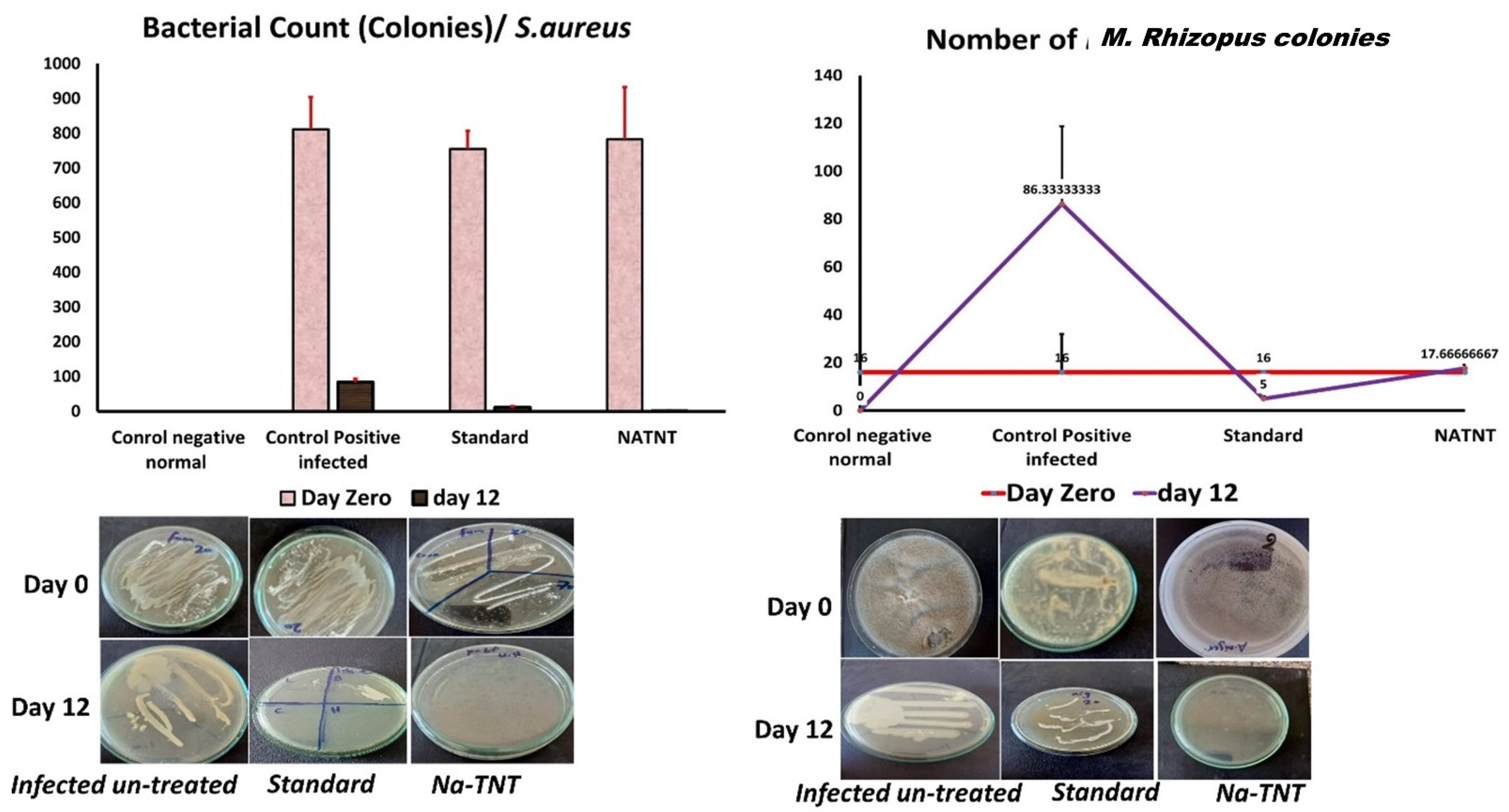
| SBET (m2·g−1) | Average Pore Size (nm) | Total Pore Volume (cm3/g) |
|---|---|---|
| 154.85 | 5.791 | 0.21732 |
Disclaimer/Publisher’s Note: The statements, opinions and data contained in all publications are solely those of the individual author(s) and contributor(s) and not of MDPI and/or the editor(s). MDPI and/or the editor(s) disclaim responsibility for any injury to people or property resulting from any ideas, methods, instructions or products referred to in the content. |
© 2023 by the authors. Licensee MDPI, Basel, Switzerland. This article is an open access article distributed under the terms and conditions of the Creative Commons Attribution (CC BY) license (https://creativecommons.org/licenses/by/4.0/).
Share and Cite
Almalki, A.H.; Hassan, W.H.; Belal, A.; Farghali, A.; Saleh, R.M.; Allah, A.E.; Abdelwahab, A.; Lee, S.; Hassan, A.H.E.; Ghoneim, M.M.; et al. Exploring the Antimicrobial Activity of Sodium Titanate Nanotube Biomaterials in Combating Bone Infections: An In Vitro and In Vivo Study. Antibiotics 2023, 12, 799. https://doi.org/10.3390/antibiotics12050799
Almalki AH, Hassan WH, Belal A, Farghali A, Saleh RM, Allah AE, Abdelwahab A, Lee S, Hassan AHE, Ghoneim MM, et al. Exploring the Antimicrobial Activity of Sodium Titanate Nanotube Biomaterials in Combating Bone Infections: An In Vitro and In Vivo Study. Antibiotics. 2023; 12(5):799. https://doi.org/10.3390/antibiotics12050799
Chicago/Turabian StyleAlmalki, Atiah H., Walid Hamdy Hassan, Amany Belal, Ahmed Farghali, Romissaa M. Saleh, Abeer Enaiet Allah, Abdalla Abdelwahab, Sangmin Lee, Ahmed H.E. Hassan, Mohammed M. Ghoneim, and et al. 2023. "Exploring the Antimicrobial Activity of Sodium Titanate Nanotube Biomaterials in Combating Bone Infections: An In Vitro and In Vivo Study" Antibiotics 12, no. 5: 799. https://doi.org/10.3390/antibiotics12050799
APA StyleAlmalki, A. H., Hassan, W. H., Belal, A., Farghali, A., Saleh, R. M., Allah, A. E., Abdelwahab, A., Lee, S., Hassan, A. H. E., Ghoneim, M. M., Abdullah, O., Mahmoud, R., & Abo El-Ela, F. I. (2023). Exploring the Antimicrobial Activity of Sodium Titanate Nanotube Biomaterials in Combating Bone Infections: An In Vitro and In Vivo Study. Antibiotics, 12(5), 799. https://doi.org/10.3390/antibiotics12050799






